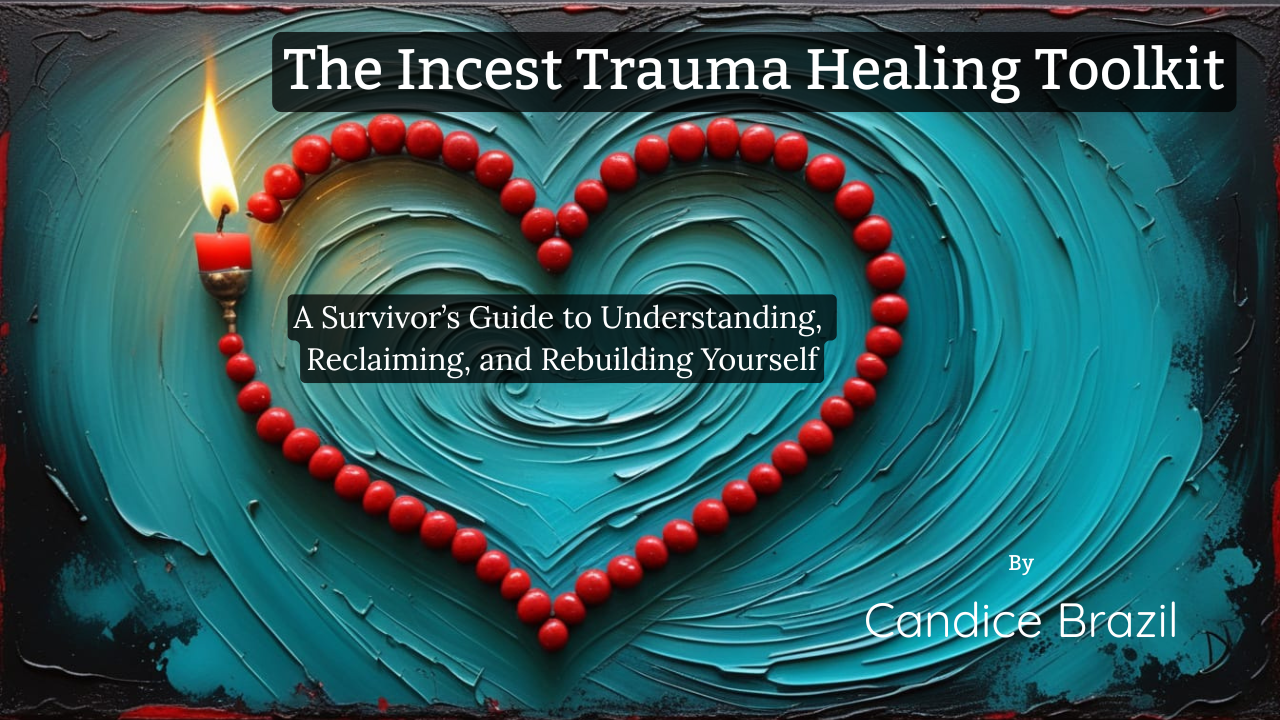Understanding Incest
The purpose of this page is to compat the overwhelm by sharing hard-earned wisdom with clarity, so that incest survivor’s may be empowered in their healing journey.
Here is where Holey House transforms the scattered, silenced truths about incest into organized, accessible, trauma-informed wisdom that survivors, partners, and therapists can actually use. My hope is to relieve the cognitive and emotional burden survivors carry by giving them a “Second Brain” they can borrow – mine.
Incest changes everything.
The brain. The body. The heart.
And the way we love.
“Trauma is perhaps the most avoided, ignored, belittled, denied, misunderstood, and untreated cause of human suffering.”
Nowhere is Dr. Peter Levine’s quote more true than in the realm of incest. This particular trauma exists inside a web of cultural denial so thick that even the professionals trained to help often hesitate to name it. The taboo surrounding incest silences survivors, distorts research, and buries the conversation under shame and secrecy. By confronting what society avoids, The Knowledge Hub seeks to dismantle that silence, transforming avoidance into awareness, ignorance into education, and suffering into understanding.
For too long, survivors have had to assemble the truth from fragments: a study here, a therapist there, whispers in hidden corners of the internet. The Knowledge Hub brings it all together, academic research, survivor insight, and trauma-informed language. Here we bring clarity where there once was confusion.
New Here? Begin with the foundations.

Understanding Incest
The 4 Realms of Knowledge
I. The Trauma of Incest
Understanding the Hidden Architecture of Incest
How incest happens: grooming, secrecy, family systems, and cultural denial.
Forms of Abuse
- Parental incest
- Sibling sexual abuse
- Familial CSA (extended family)
- Multi-perpetrator abuse
- Emotional and spiritual incest
- Covert vs overt sexual abuse
- Groomed “consensual” abuse
Grooming, Secrecy, & Control
- Grooming tactics
- Dependency and entrapment
- Secrecy systems
- Threat + reward cycles
- Manipulative attachment formation
- “Good victim” conditioning
- Denial and gaslighting in the family system
Family Systems & Power Dynamics
- Enmeshment and boundary collapse
- Parentification
- Triangulation and scapegoating
- Collusive family roles (enabler, hero, lost child)
- Patriarchal and cultural influences
- Intergenerational trauma and silence
Developmental Timing & Neurodevelopment
- Age of first trauma
- Sensitive windows of attachment
- Impact on emotional regulation systems
- Brain development and trauma imprinting
- Trauma before language (preverbal encoding)
The Social & Cultural Context
- Myths about incest
- Cultural denial and minimization
- Legal invisibility and barriers to justice
- The silence of institutions (religion, medicine, schools)
II. The Impact
The Echoes of Incest Trauma Through the Mind, Body, and Soul
What it does to the mind, body, and relationships.
Neurological & Physiological Effects
- Brain development and trauma (amygdala, hippocampus, prefrontal cortex)
- Default mode network disruption
- Memory fragmentation and dissociation
- HPA axis dysfunction (stress system)
- Chronic hypervigilance and shutdown cycles
- Somatic memory and body flashbacks
Psychological & Emotional Effects
- Shame and self-loathing
- Fragmented identity / loss of self
- Emotional repression
- Learned helplessness
- Cognitive distortions from trauma
- Internalized abuser voice
Relational & Attachment Injury
- Disorganized attachment
- Anxious-preoccupied and avoidant dynamics
- Fear of intimacy and closeness
- Emotional unavailability cycles
- Codependency vs hyper-independence
- Trust and betrayal trauma
Sexual & Romantic Consequences
- Sexual shutdown and aversion
- Compulsive sexual behavior / reenactment
- Sexual fawning and compliance
- Body disconnection and performance-based sex
- Confusion between love, pain, and attention
Behavioral & Functional Impacts
- Perfectionism and people-pleasing
- Addiction and self-medication
- Workaholism
- Eating disorders
- Self-harm and suicidality
- Financial or relational self-sabotage
Spiritual & Existential Impact
- Loss of trust in goodness
- Guilt toward faith or God
- Existential grief and meaning loss
- Moral injury and spiritual bypassing
- Reconnection with self/spirit
III. The Survival
The Protection Patterns that Became Your Prison
The coping strategies that once saved you, now ready to evolve.
Trauma Responses
- Fawn
- Freeze
- Flight
- Fight
- Fragmentation / dissociation
- Submission reflex
Dissociation & Fragmentation
- Structural dissociation (parts work)
- Depersonalization & derealization
- Amnesia and time loss
- Switching and emotional compartmentalization
- Functional dissociation in adulthood
Coping Mechanisms
- People-pleasing
- Self-abandonment
- Hypervigilance
- Emotional numbing
- Avoidance
- Fantasy and idealization
- Overfunctioning & caretaking
Reenactment & Relationship Patterns
- Repeating the familiar pain
- Trauma bonding and intermittent reinforcement
- Submission and dominance cycles
- Attraction to emotionally unavailable partners
- Rejection sensitivity and self-sabotage
- Sexual pain as emotional reenactment
Internal Working Models & Schemas
- Defectiveness / shame schema
- Emotional deprivation schema
- Mistrust / abuse schema
- Subjugation / self-sacrifice schema
- Dependence / incompetence schema
Identity and the False Self
- Masking and chameleon behavior
- Hyper-adaptability
- Dissociative identity structures
- Role-based self-worth (“the caretaker,” “the achiever”)
IV. The Healing
Discovering Self and the Journey of Healing After Incest
Healing pathways from survival to sovereignty, grounded in science and soul.
Trauma Literacy & Reframing
- Understanding trauma vs pathology
- The biology of safety and regulation
- Shame to self-compassion
- Nervous system education\
- “You weren’t bad, you were adapting.”
Somatic & Nervous System Healing
- Grounding and orienting
- Vagal toning
- Pendulation & titration
- Movement therapy
- Somatic experiencing
- Trauma release through the body
Therapeutic Modalities
- IFS (Internal Family Systems)
- EMDR
- Somatic Experiencing
- TF-CBT / DBT
- Ego-state therapy
- Trauma-informed sex therapy
- Group and relational therapy
Reparenting & Identity Reconstruction
- Inner child repair
- Self-trust development
- Shame resilience
- Narrative rewriting
- Post-traumatic identity formation
Relational & Sexual Healing
- Trauma-informed communication
- Emotional safety and pacing
- Intimacy after incest
- Consent and embodied boundaries
- Co-regulation in partnership
- The role of witness and validation
Life Reconstruction & Meaning
- Post-traumatic growth
- Building safe routines
- Grief and mourning lost childhoods
- Creating purpose from pain
- Ritual and creativity
- Reconnecting with spirituality
Partner & Professional Education
- Partner guide materials
- Therapist literacy
- Misdiagnosis prevention
- Ethical frameworks
- Clinical best practices
Featured Articles

You’ve carried enough alone.
It’s time to understand what happened, and how it shaped the way you see yourself, love, and trust.
The Incest Trauma Healing Toolkit is a gentle, survivor-created guide that helps you make sense of your story, calm your nervous system, and begin rebuilding a relationship with yourself that feels safe again.
Whether you’re just realizing what you survived or years into your recovery, this toolkit gives you the language, framework, and guidance to start transforming pain into power.
